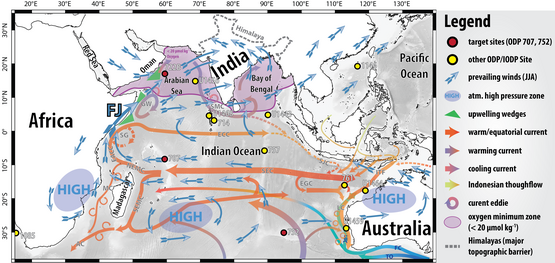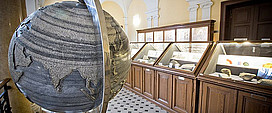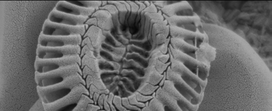MIO:TRANS - Nutrientcycles in the miocene Indian Ocean
MIO:TRANS - Nutrient Fluxes in the Miocene Indian Ocean
Miocene Indian Ocean: Transport and Recycling of Antarctic Nutrient Sources
Project outline
The Indian monsoon is one of the most influential weather systems on Earth. Its seasonal winds bring rain to one of the most populous regions in the world. In addition to seasonal rainfall, the monsoon winds also have another effect on the Indian Ocean: off the coast of the Arabian Peninsula, they displace water on the sea surface. As a result, water masses rise from the depths of the ocean. This upwelling of nutrient-rich deep waters along the coast of Oman makes the area one of the most productive regions in the world's oceans. This zone of high primary productivity is thus a direct expression of the monsoon winds and the nutrient saturation of the upwelling deep waters. Any changes in this system – for example, climate change – would have a massive impact on the marine ecosystem in the region. The reduction of the temperature gradient between the South Pole and the equator, closely related to the monsoon wind strength, is significant here.
We also know that the interaction between monsoon winds and the upwelling of nutrient-rich deep water has not always been the same in Earth's long history. Paleoclimatological data from the northern Indian Ocean suggest that this complex interaction may have often been organized differently, particularly during times of warmer climates. The FWF project MIO:TRANS - Nutrient Cycles in the Miocene Indian Ocean will investigate the interaction of primary productivity and the upwelling of nutrient-rich deep waters and climate change. Our goal is, therefore, to generate climate and primary productivity data from geological time windows that can be correlated with the expected changes in today's climate change. Some of the best analogies for future climate scenarios are found between 8 and 15 million years ago in the Miocene - the target interval of MIO:TRANS.
Using microscopic fossils and geochemical information trapped in their skeletons and sediments, MIO:TRANS will study wind-driven upwelling of nutrient-rich water masses associated with nutrient and energy fluxes in the Miocene of the Indian Ocean. These objectives will be achieved by studying a transect through the Indian Ocean extending from latitude 30°S to 20°N that can map the entire oceanic and atmospheric circulation in the Indian Ocean. Furthermore, MIO-TRANS sheds light on a transport route for marine nutrients through the deeper water masses of the Indian Ocean, which extends to a depth of 1500 m and has hardly been explored in the geologic past. The aim here is to record possible changes in nutrient transport through these deep waters associated with temperature changes in the higher latitudes of the southern hemisphere.

 Institut für Erdwissenschaften
Institut für Erdwissenschaften

